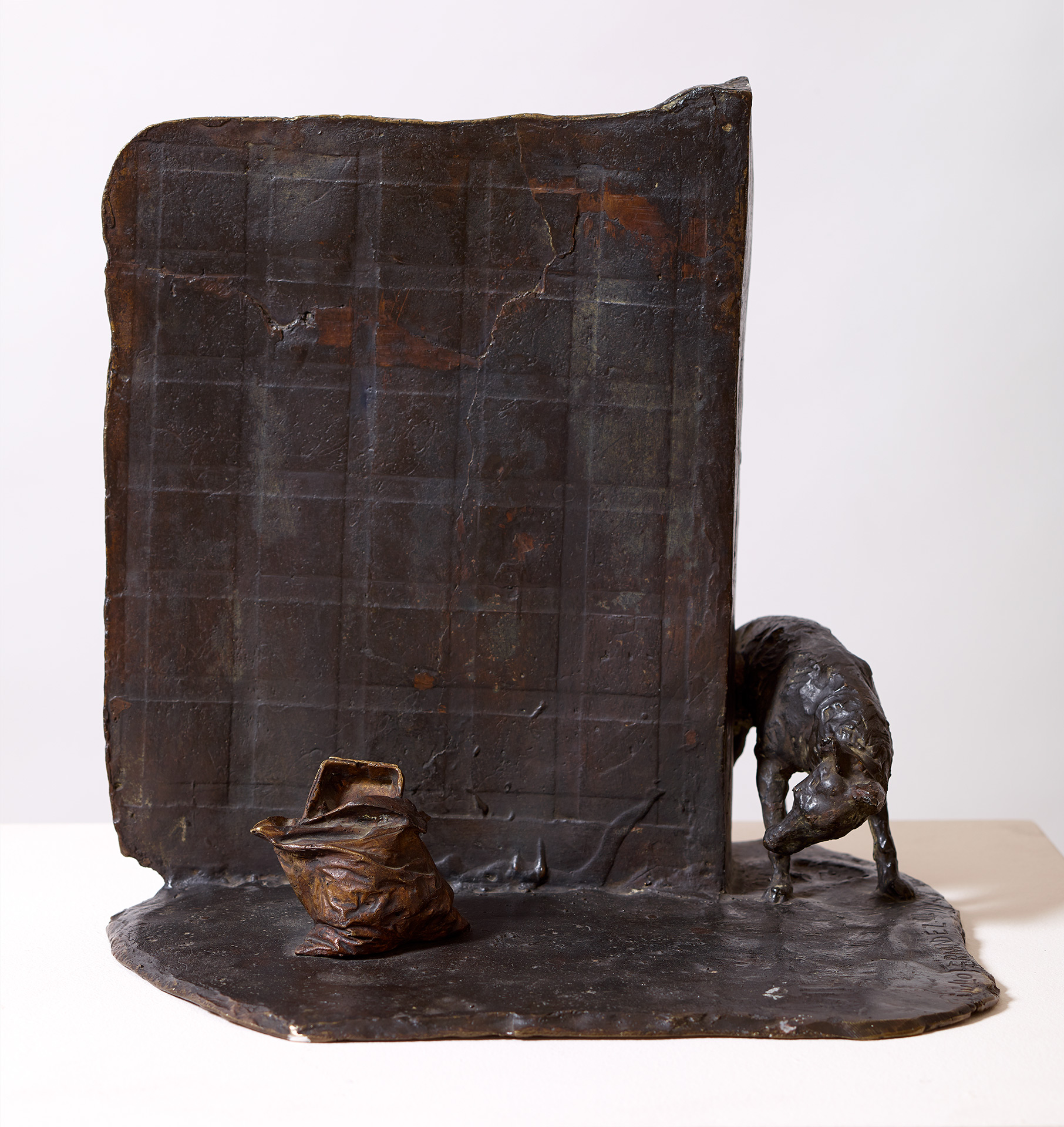
Julio López Hernández (Madrid, 1930)
Wall and Dog
1972
WORK INFORMATION
Bronze, 32 × 27.5 × 30.5 cm
OTHER INFORMATION
Signed on the base: "JULIO HERNÁNDEZ III / IV"
Julio López Hernández received an early art education from his own family, working alongside his father in the goldsmith's shop established by his grandfather. Learning the secrets of the trade, mastering techniques and ensuring a perfect finish were the cornerstones of this training process. López Hernández studied at the School of Arts and Crafts and later at the San Fernando School of Fine Arts in Madrid.
Throughout his sculpting career, López Hernández has managed to reconcile principles formerly regarded as conflicting. In his creations, the process of craftsmanship coexists with an idea of renewal; and his work continues and builds on the forms of traditional sculpture even while it radically transforms them. For instance, he revitalised the concept of monuments, medals and reliefs, hitherto relegated to a position of minor importance; and at the same time, as a member of the Realist School of Madrid, he collaborated with the greatest abstract painter of the Spanish avant-garde, Lucio Muñoz. His "realist" sculpture burst onto an avant-garde stage dominated by abstraction, claimed its place on that stage and set a new standard of modernity. His knowledge of technique and procedure did not lead the sculptor to limit himself to an exclusively academicist practice; instead, it served him as a tool for creating works that rise above tangible reality to a transcendent dimension. López Hernández's art is based on reality, but rather than imitating it his work transcends that reality to find a new artistic and meaningful dimension of the real.
Tapia y perro [Wall and Dog] is one example of this way of understanding sculpture. The representation of the wall becomes an abstract recreation that underscores the work's objectual nature, "capturing" a moment of unforeseen action. The treatment of the different components points to a conceptual interpretation of reality contrary to any idea of mimesis. López Hernández's work is filled with images of a fragmented, clipped reality, as if he had framed the sculpture, and this heightens the value of the representation, giving it unorthodox significance. The themes of his work are snapshots of the ordinary, fragments of the world around us that deploy a new poetics of the real. [Víctor Nieto Alcaide]

